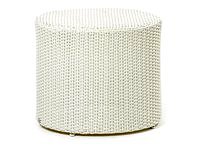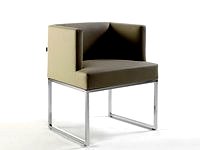This is an era in which our shoes and bracelets can
count our every step, connected to an ever-growing
number of health and fitness apps that keep us moving
and motivated. With all due respect to these helpful
gadgets – things could be much easier. Stand up for
a moment and the logical solution to the question of
how to lead a healthier lifestyle becomes clear. While
we have developed amazing tools and machines to help
to make our lives more liveable, joyful and productive,
our anatomy is still more or less the same as our pre-
historic ancestors. Humans are especially well adapted
for active and varied tasks – we are persevering, reac-
tive and especially agile. The explorer in us welcomes
a complex assortment of stimuli, and we degenerate
with monotonous tasks. If our mental capacities have
evolved faster than the evolution of our bodies, does
this mean that Homo sapiens are not built for
modern life?
It does not take a scientist to know that being seden-
tary in the office for eight hours a day, or 55,000 hours
in a lifetime, is bad for your health – and exercise alone
is not the perfect antidote to sitting. Much more con-
sequential is to start reducing the time you spend
glued to a chair – as we all know, when the computer
absorbs our attention, we tend to forget everything
we’ve learned about maintaining a naturally correct
posture.
The simplest ways to avoid occupational and office dis-
orders caused by monotonous sitting involve move-
ment. But physical movement in the office means
more than the occasional walk to the photocopier, cof-
fee maker or cafeteria. From the mouths of experts: we
should spend at least 40 percent of the workday stand-
ing and 60 percent sitting. Meaning that sitting in the
very best office chair, designed according to the latest
ergonomic insights and fitted with all manner of tech-
nical wonders, should still be alternated with periods
of standing. It improves circulation and breathing, aids
metabolism and the absorption of nutrition, and it
keeps your leg muscles looking long and lean. You
wouldn’t be alone either, some of histories’ great minds
have preferred “High Work”, including: Vladimir
Nabokov, Thomas Wolfe, Winston Churchill, Thomas
Jefferson and programmers at tech companies in Sili-
cone Valley, who are once again ahead of the curve –
many choose to work while standing.
Change your habits, and in the end your body and your
company will thank you. Why? Because physical activ-
ity, combined with varied working positions, promotes
concentration levels and increases productivity. Meet-
ings held while standing are shown to be significantly
shorter and more result-oriented than those held sitting
down. In short, the option of sitting down for some tasks
and standing up for others offers substantial benefits
both for employees and for companies. When you start
standing up more often, your company can reckon on
a more productive workforce – get out of the chair, stand
up and “High Work”.
IT PAYS TO STAND UP FOR YOUR WORK.
ILLUSTRATION BY ELISABETH D.







